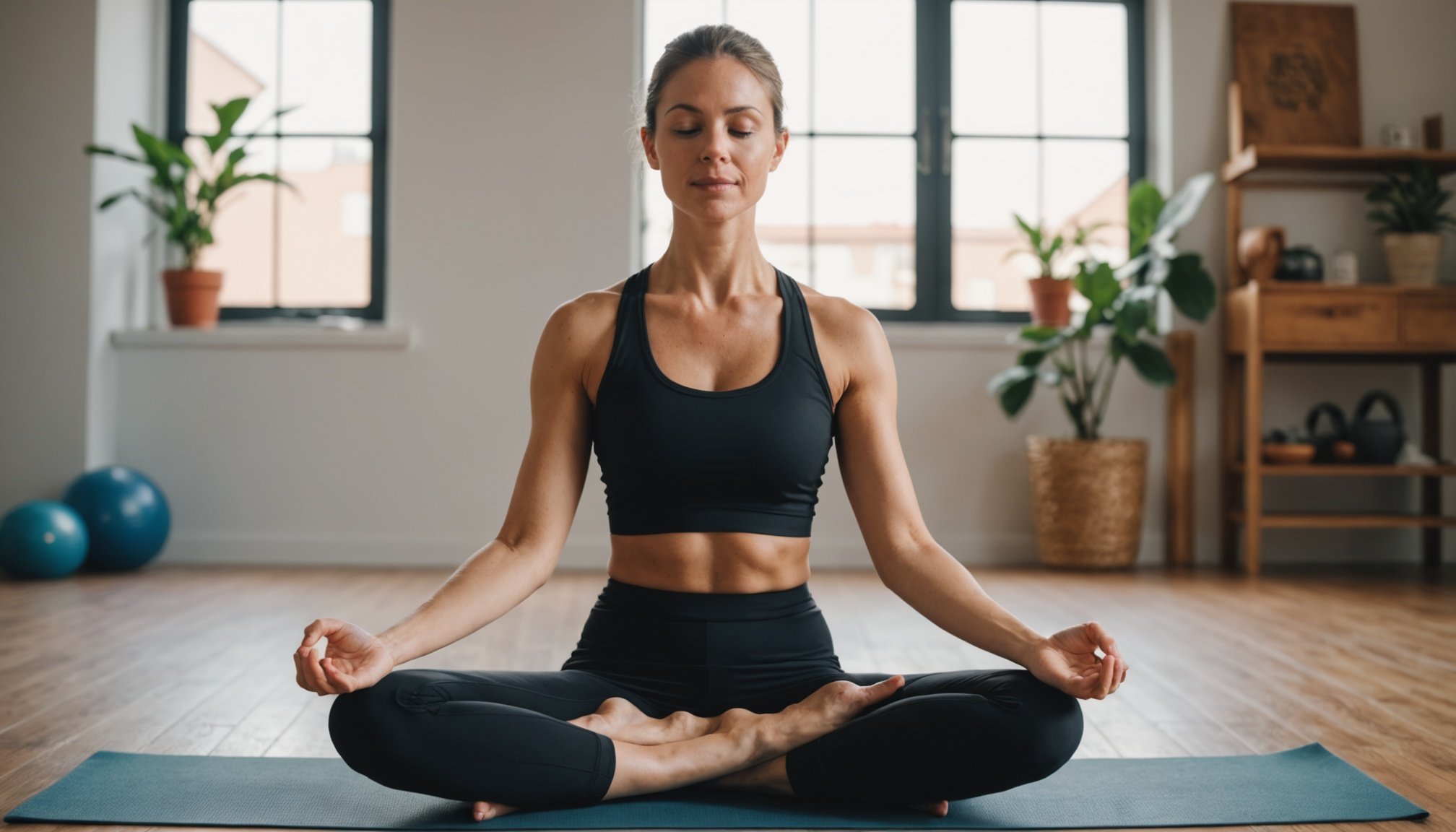Understanding Back Pain and Its Causes
Back pain is a prevalent issue affecting a significant portion of the population. At its essence, back pain relief hinges on identifying the causes of back pain. This ailment can stem from various sources, with common culprits including muscle or ligament strain, bulging or ruptured disks, arthritis, and osteoporosis. These different causes can manifest in varying degrees of pain, sometimes acute or chronic, influencing an individual’s daily functionality.
Lifestyle choices and posture play crucial roles. Prolonged periods of sitting, particularly with poor posture, contribute significantly to back problems. Activities requiring repetitive bending or lifting also exacerbate strain on the back. Prioritizing ergonomic furniture and regularly adjusting one’s position can alleviate discomfort and uphold back health. Simple adjustments, when incorporated into daily routines, can significantly improve one’s posture.
Topic to read : Crafting an All-Encompassing Wellness Strategy to Tackle Seasonal Health Issues
Moreover, a lesser-discussed yet impactful aspect is the connection between stress and back pain. Stress causes muscle tension, particularly in the back and shoulders, leading to increased pain. Techniques such as deep breathing, yoga, or regular physical activity can mitigate stress levels and thus, offer relief. Understanding back pain involves an integrated approach, focusing on lifestyle and emotional well-being, paving a path toward effective back pain relief.
Principles of Yoga for Back Pain Relief
Yoga is an invaluable therapeutic tool for achieving back pain relief. Integrating specific yoga principles can help manage and alleviate discomfort. Understanding how yoga works involves recognizing its focus on enhancing flexibility and strength, which directly contributes to a healthy spine and reduced tension.
In parallel : Essential Strategies to Create Your Daily Mindfulness Practice for Effective Stress Relief
The key yoga principles for back pain relief include alignment, balance, and mindfulness. Correct alignment during poses prevents unnecessary strain on the back, promoting safety and effectiveness. Balance within the body reduces uneven stress, fostering a more even distribution of weight which aids healing.
Mindfulness and breathing techniques are central to this practice. Engaging in deep, controlled breathing enhances relaxation, releasing muscle tension and reducing pain. This conscious breathing not only aids physical relaxation but also supports mental clarity, enabling a more focused approach to back pain relief strategies.
Designing a suitable yoga regimen requires attention to individual needs and limitations. A comprehensive therapeutic yoga plan should accommodate different skill levels while incorporating gradual progression in complexity to foster improvement over time. This methodical approach aids in building strength, flexibility, and resilience gradually, offering sustainable relief. Understanding these principles empowers individuals to utilize yoga as a powerful ally in their journey towards a pain-free life.
Essential Yoga Poses for Back Pain Relief
Engaging in yoga poses can significantly alleviate back pain by enhancing flexibility and strength. Here, we explore three therapeutic yoga poses specifically tailored for back pain relief.
Cat-Cow Stretch
The Cat-Cow Stretch is a gentle flow between two poses that warms up the spine and releases tension.
- Instructions: Begin on your hands and knees in a tabletop position. Inhale, dropping the belly towards the mat (Cow Pose). Exhale, rounding the spine towards the ceiling (Cat Pose).
- Modifications: For beginners, keep the movements slow and controlled. Advanced practitioners can incorporate a wider range of motion.
- Benefits: This pose enhances spinal flexibility and reduces tension in the lower and upper back.
Child’s Pose
Child’s Pose is a restorative pose that calms the mind and relaxes the body.
- Instructions: Kneel on the floor, touching your big toes together while sitting back on your heels. Stretch your arms forward and rest your forehead on the mat.
- Modifications: Use a bolster under the torso if more support is needed.
- Benefits: It gently stretches the lower back, hips, and thighs, providing a soothing effect on the whole spine.
Downward Facing Dog
Downward Facing Dog is a full-body stretch that lengthens the spine.
- Instructions: Begin on all fours. Lift your hips up and back, forming an inverted V-shape.
- Modifications: Beginners can slightly bend the knees. Advanced practitioners can focus on fully extending the legs.
- Benefits: This pose not only stretches the back muscles but also aids in strengthening the arms and legs, relieving stress on the spine.
Creating Your Personalized Yoga Routine
Designing a personalized yoga routine tailored to individual needs can enhance well-being and address specific issues, such as back pain. To create an effective sequence, begin by assessing your personal goals and requirements. Ask yourself: What are your main objectives for practicing yoga? For back pain, focus on poses that strengthen the core and improve flexibility.
A successful back pain yoga sequence should be structured thoughtfully. Begin with gentle warm-up poses such as cat-cow and pelvic tilts to prepare your spine. Incorporate poses like downward dog, bridge pose, and child’s pose, focusing on maintaining proper alignment. These poses can help alleviate tension and strengthen supportive muscles around the spine. End with relaxation poses to stretch and soothe any residual discomfort.
When designing your yoga routine, consider the ideal session duration and frequency. For optimal benefits, aim to practice at least 3-4 times weekly. Sessions can range from 20 to 60 minutes, depending on your schedule and comfort level. Remember, consistency is key to effect change, especially for pain relief. By adhering to these guidelines, you can cultivate a yoga practice that not only addresses back pain but also promotes overall health and balance.
Integrating Yoga into Daily Life
Incorporating yoga into a daily routine can be challenging, especially for those with packed schedules. However, establishing a daily yoga practice is crucial for achieving long-term benefits. Start by identifying small pockets of time throughout the day, such as early mornings or lunch breaks, to practise. Integrating short sessions, even as brief as 10-15 minutes, can significantly contribute to a yoga lifestyle.
Consistency is key when integrating yoga into daily life. Committing to regular practice builds discipline and can lead to improvements in flexibility, stress reduction, and overall well-being. It’s essential to set realistic goals; practicing yoga every day might be daunting, but starting with a few days per week can be more manageable.
For quick relief and to maintain focus throughout the day, consider incorporating a few simple poses. Mountain pose or cat-cow stretches can be discreetly done at a desk or during short breaks. These poses help alleviate tension and promote relaxation, making them ideal for busy individuals seeking balance.
By developing a consistent routine, even amidst hectic schedules, individuals can seamlessly integrate yoga into their lives and enjoy its many physical and mental benefits. Incorporating yoga into everyday practices transforms it from an occasional activity into a rewarding lifestyle choice.
Expert Insights and Testimonials
When it comes to relieving back pain, expert yoga insights play a significant role in guiding practitioners towards effective solutions. Prominent yoga instructors specializing in back pain emphasize the importance of gentle movement and mindful breathing. They recommend incorporating poses that focus on stretching the spine and strengthening the core, which are crucial for pain management.
Real-life yoga success stories often provide motivation as well as practical information. Consider the case of Sarah, a dedicated yogi who suffered from chronic back discomfort. Through consistent practice and personalized advice from her instructor, she managed not only to alleviate her pain but also to enhance her overall wellness. Her experience highlights the transformative power of yoga when combined with professional guidance.
Enriching your understanding doesn’t stop at classes or testimonials. To delve deeper, instructors often suggest exploring additional resources. Articles, books, and online platforms focusing on yoga and back health can provide further educational material. Adopting a holistic approach by integrating both expert advice and personal research ensures a comprehensive strategy for those seeking relief from back pain. This dual approach encourages a balance between professional insight and self-directed learning.











